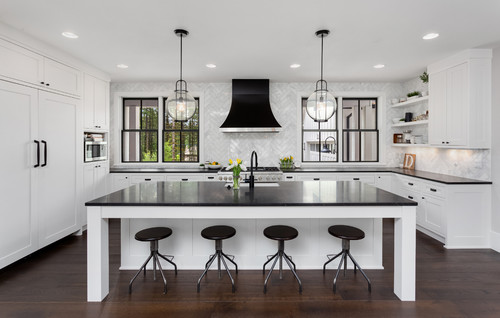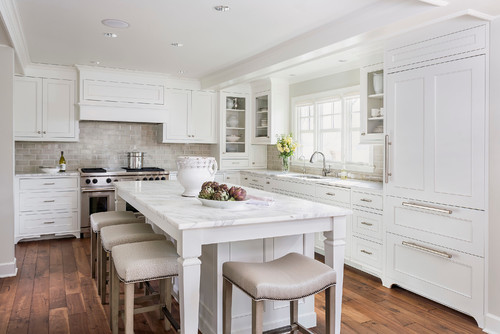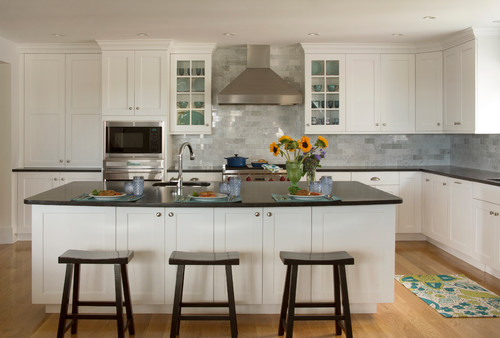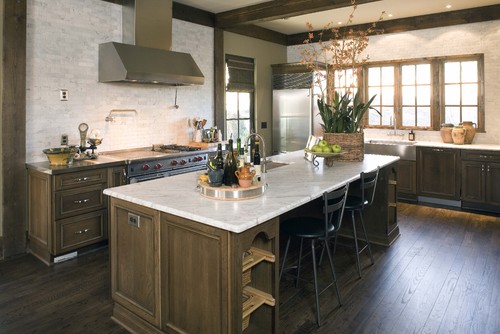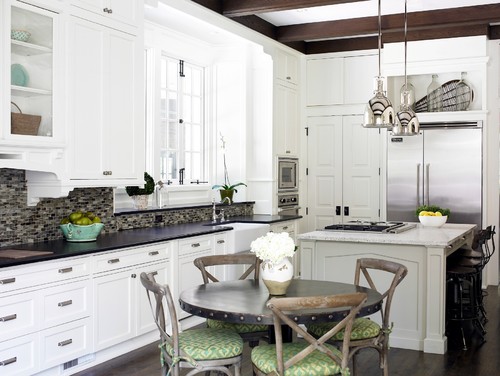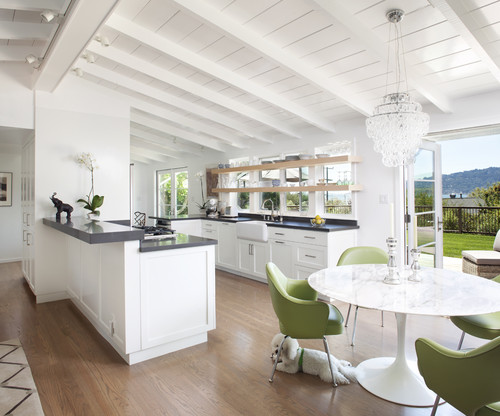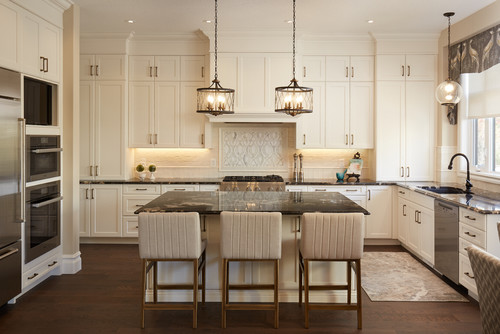By: Rebekah Zaveloff
Many people are at a loss when it comes to defining their style. Some people know what they like but are afraid of getting the terms wrong, or they’re afraid of being pigeon-holed into one style when they feel like they’re in between a few different ones. The truth is, most spaces have elements of different styles and aren’t all one way.
To sort all this out, join me on a tour of kitchen styles and sub-styles, from Classic to Modern, Industrial to Cottage, and lots in between. Today we’ll start with the most approachable of styles, classic style.
Classic kitchens are timeless and flexible. This comes with other givens, such as neutral color palettes and simple, unfussy details. Sure, a classic kitchen can be deemed too safe for the individualist and too ornate for the purist, but for me it’s like jeans and a white t-shirt: add a beaded necklace and heels or tennis shoes and black blazer and you can make the look your own. (And so can the next homeowner if you’re concerned about resale value.)
1. White or cream cabinetry. Classic kitchens are timeless yet fresh. This is a style that almost everyone feels comfortable in, even some the modernists among us. White kitchens define this style.
2. Simple architectural details. You may see legs on islands, feet or furniture-style toekicks, crown molding and even a paneled hood, but these details are often restrained in a classic kitchen rather than being over the top and ornate.
3. Honed black countertops. Classic kitchens often go the timeless route with blacks or whites, whether it’s honed absolute black granite, soapstone, or cast quartz material.
4. White marble countertops.Cararra marble and Calacatta marble are the two that really stand out in classic kitchens. In fact, marble countertops are often the focal point of a classic kitchen. Even though many homeowners know there are maintenance issues with marble, they can’t resist its beauty.
5. White subway tile. It really doesn’t matter what size, though the classic is 3×6. It can be glossy, crackle, beveled or square edged, handmade or machine made, or even in white marble. If you’re looking for a twist on the classic, try a 2×6 or 2×8 or 2×4 — the proportions can really change the look of your kitchen, as can the grout color.
6. Simple door styles, not too modern, not too ornate. Another aspect that defines this look is the cabinet door style — often either a simple shaker door or a shaker door with a bead moulding. You don’t see a lot of raised panel doors (of the sort often found in traditional kitchens) or flat-panel doors typically seen in modern kitchens.
7. Neutral palettes: Classic kitchens don’t have to be all white. This kitchen mixes stained and painted cabinetry, and even though the “white” cabinets have a glaze, the simple door style (shaker with a bead moulding) keeps it from going too traditional. The subway tile here has a bit more color than the classic white that’s so popular, but it’s still a classic.
Black and white is about as timeless and classic as it gets. This kitchen with the shaker doors goes a bit more contemporary with the black island and dark subway tile with white grout, but its bones are still grounded in the classics.
Alternative palettes like brown and white or black and white also find their way into classic kitchen design. Here, walnut cabinets, white marble and classic door style have all the elements of a classic kitchen.
8. Flexibility: What I love about classic kitchens is that they’re chameleons: You can take the same kitchen and completely change its look by mixing in modern bar stools or lighting … or industrial bar stools and lighting … or traditional — you get the idea. Classic can become eclectic by adding modern tile and mixing it with a vintage-style table and chairs and industrial-style pendant lights.
Classic can go more traditional when mixing it with an ornate hood, traditional chandelierand turned island legs.
Classic white shaker doors can go more modern by adding a modern light fixture and terrific Saarinen table to the mix. This kitchen even has a bit of farmhouse modern because of the ceiling, but it’s still classic.
Sometimes it’s the architecture alone that influences a classic kitchen in one direction or another. Here, classic goes country-modern with exposed beams and voluminous space. As you can see, classic-style kitchens are limited only by your imagination — or the imagination of thousands of designers.
